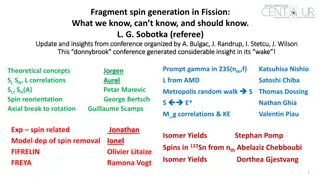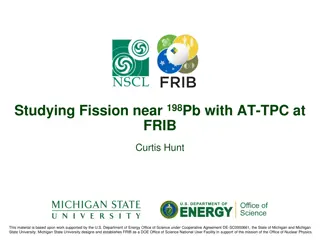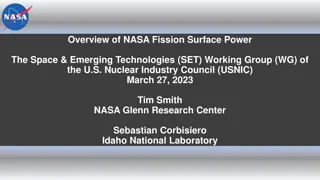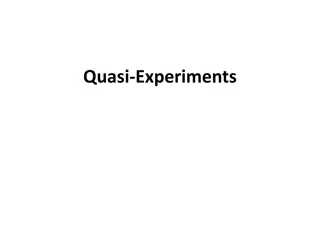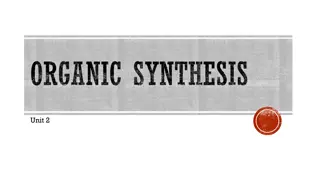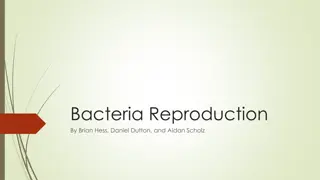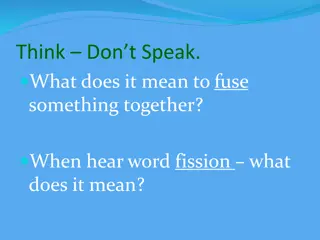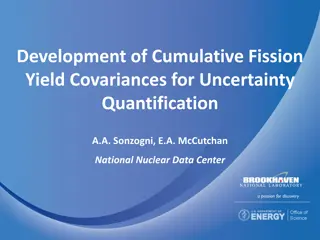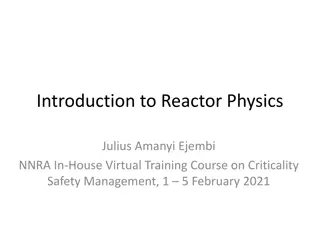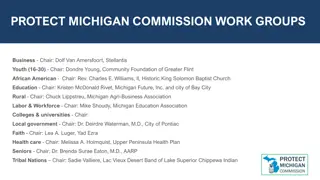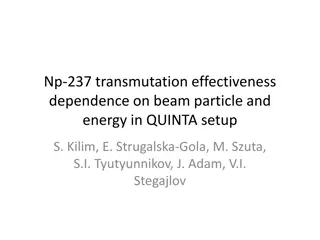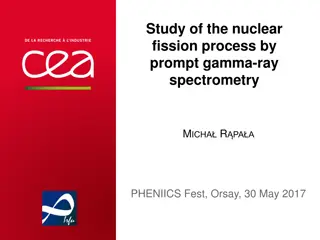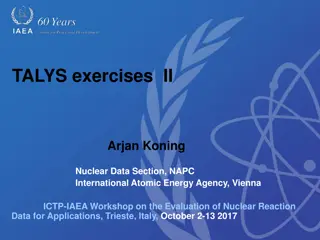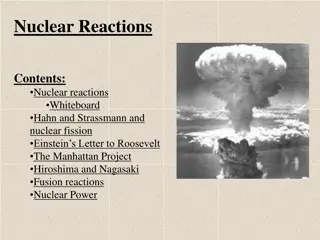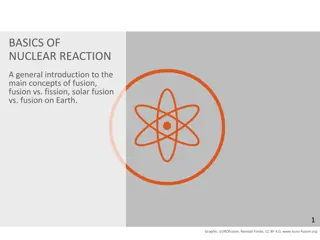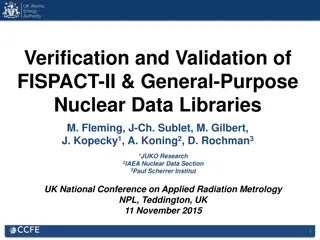Advanced Fission Experiments at University of Michigan
The University of Michigan, under the guidance of Dr. Sara A. Pozzi, conducts cutting-edge fission experiments leveraging organic scintillation detectors. These detectors offer advantages such as nanosecond-scale response times, energy proportionality, and scalability. The experiments focus on improved fission data, including low-energy neutron emissions and neutron-photon correlations in fission chambers. The use of Chi-Nu spectrometer at LANL enhances understanding of fission fragment physics. Additionally, the benchmark experiments featuring organic scintillators provide valuable insights into neutron-photon correlations and prompt neutron periods, showcasing the university's commitment to advancing nuclear engineering and radiological sciences.
Download Presentation

Please find below an Image/Link to download the presentation.
The content on the website is provided AS IS for your information and personal use only. It may not be sold, licensed, or shared on other websites without obtaining consent from the author.If you encounter any issues during the download, it is possible that the publisher has removed the file from their server.
You are allowed to download the files provided on this website for personal or commercial use, subject to the condition that they are used lawfully. All files are the property of their respective owners.
The content on the website is provided AS IS for your information and personal use only. It may not be sold, licensed, or shared on other websites without obtaining consent from the author.
E N D
Presentation Transcript
Fission Experiments at University of Michigan Sara A. Pozzi, Ph. D. Professor Department of Nuclear Engineering & Radiological Sciences University of Michigan, Ann Arbor MI, USA 1
Organic Scintillation Detectors General Characteristics Benchmark experiments based on organic scintillator systems could provide data in an expanded energy range Organic scintillators have several advantages for detecting neutrons and gamma rays Nanosecond-scale response times Response is proportional to the energy deposited Good intrinsic efficiency Pulse shape discrimination Good scalability and low cost Shielded 252Cf source measured with a 2 x2 stilbene 2
Experiments for Improved Fission Data Low energy neutron emission in 252Cf(sf) at University of Michigan 1 Event-by-event neutron-photon correlations in 242Pu(sf) fission chamber using Chi-Nu at LANL Fission fragment physics The Chi-Nu spectrometer at LANL- LANSCE, consisting of 54 EJ309 detectors. 2 3 The three stages of fission emission: (1) initial excitation, (2) neutron evaporation, (3) gamma decay. Animation of the FS3 system at Michigan showing the system consisting of 40 stilbene detectors. gKin 2.773962e+07 2.773962e+07 1.706686e+07 gKin nKin Light Output (MeVee) 1.8 Entries Mean x Mean y Std Dev x Std Dev y Std Dev y Std Dev y Entries Mean x Mean y Std Dev x Std Dev x Entries Mean x Mean y 20000 20000 0.8853 0.2462 0.8379 8.204 0.8853 0.2462 0.8379 0.3019 0.3019 0.2574 18.8 0.2041 18000 18000 1.6 16000 16000 1.4 5 10 14000 14000 4 1.2 10 3 10 12000 12000 1 2 10 10000 10000 10 0.8 1 8000 8000 0 0.5 0 0.6 1 0.5 6000 6000 1.5 1 2 1.5 2.5 0.4 2 3 4000 4000 gammaMult 2.5 3.5 3 4 neutronMult 0.2 2000 2000 0 0 0 0 10 20 30 40 Time of Flight (ns) Neutron-photon measured multiplicity distribution in 242Pu(sf). Neutron-photon correlations can be determined from this distribution A fragment angular momentum and excitation energy determine the neutron-photon correlations (dotted/dashed: light/heavy fragment). Kinematic plot showing neutron-photon time separation and light output collected with ORNL fission chamber and a 30 keVee (~300 keV proton) detection threshold. 1. M. J. Marcath, R. C. Haight, R. Vogt, M. Devlin, P. Talou, I. Stetcu, J. Randrup, P. F. Schuster, S. D. Clarke, S. A. Pozzi, Measured and simulated 252Cf(sf) prompt neutron-photon competition , Phys. Rev. C 97, 044622, 2018. 2. S. Marin, V. A. Protopopescu, R. Vogt, M. J. Marcath, S. Okar, M. Y. Hua, P. Talou, P. F. Schuster, S. D. Clarke, S. A. Pozzi, Event-by-event neutron photon multiplicity correlations in 252Cf(sf) , Nucl. Instr. Meth. A 968, 163907, 2020. 3
Subcritical Copper-Reflected Alpha-Phase Plutonium Benchmark using Organic Scintillators Neutrons Photons ^ Measurement Setup Organic Scintillator Array OSCAR Pulse shape discrimination, 35 keVee (~400 keV proton) detection threshold Rossi-alpha results. SCR?P Benchmark: 4.5 kg of weapons-grade, alpha-phase plutonium reflected by copper (1.27 cm 10.16 cm) Rossi-alpha and Feynman-alpha neutron measurements were performed and independently simulated prompt neutron period A rigorous quantification and propagation of measurement uncertainty was developed and validated Organic scintillator estimates of the prompt neutron period agree within one-standard-deviation error bars 1. T. Cutler, J. Arthur, J. Hutchinson, S. Walston, G. Keefer, W. Monage, "Copper- and Polyethylene-Reflected Plutonium-Metal-Sphere Subcritical Measurements," NEA/NSC/DOC(95)03/IX, FUND-NCERC-PU-HE3-MULT-003, 2019. 2. M.Y. Hua, J.D. Hutchinson, G.E. McKenzie, B.C. Kiedrowski, M.W. Liemohn, S.D. Clarke, S.A. Pozzi, Measurement Uncertainty of Rossi-alpha Neutron Experiments, Annals of Nuclear Energy 147, 107672, 2020. 4


